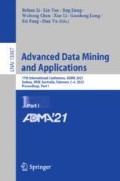Abstract
Traditional electroencephalography (EEG) based brain computer interface (BCI) systems for performing three-dimensional (3-D) movement control used motor imagery paradigm, where the participants had to be trained to imagine certain combinations of movements of parts of their body such as hands, feet, and tongue to control the movements in separate dimensions. In the present work, we propose a new mental imagery - flying imagery - where the participants imagine flying in certain directions in the 3-D space surrounding them. As an empirical study, the present work used machine learning methods to classify flying imagery under two stages (preparation and execution) in six directions (forward, backward, left, right, up, and down) along with a control state where no movement was imagined. We also performed classification-based time-frequency analyses in identifying the significant frequency bands, time windows, and EEG features associated with flying imagery that differ between classes and contribute to the classification. We obtained classification results significantly better than chance levels, showing that the direction of flying imagery can be decoded from the EEG signals. Our results also suggest that the spatial information of flying imagery might be encoded mainly in alpha band activities over the parietal lobe, likely originated from the posterior parietal cortex (PPC).
Y. Tang and W. Chen—Contributed equally to the paper as co-first authors.
Access this chapter
Tax calculation will be finalised at checkout
Purchases are for personal use only
References
Abiri, R., Borhani, S., Sellers, E.W., Jiang, Y., Zhao, X.: A comprehensive review of EEG-based brain-computer interface paradigms. J. Neural Eng. 16(1), 011001 (2019)
Andersen, R.A., Buneo, C.A.: Intentional maps in posterior parietal cortex. Ann. Rev. Neurosci. 25(1), 189–220 (2002)
Andersen, R.A., Snyder, L.H., Bradley, D.C., Xing, J.: Multimodal representation of space in the posterior parietal cortex and its use in planning movements. Ann. Rev. Neurosci 20(1), 303–330 (1997)
Aydemir, O., Kayikcioglu, T.: Decision tree structure based classification of EEG signals recorded during two dimensional cursor movement imagery. J. Neurosci. Methods 229, 68–75 (2014)
Barachant, A.: Pyriemann. https://github.com/pyRiemann/pyRiemann/tree/v0.2.6
Barachant, A., Bonnet, S., Congedo, M., Jutten, C.: Riemannian geometry applied to BCI classification. In: Vigneron, V., Zarzoso, V., Moreau, E., Gribonval, R., Vincent, E. (eds.) LVA/ICA 2010. LNCS, vol. 6365, pp. 629–636. Springer, Heidelberg (2010). https://doi.org/10.1007/978-3-642-15995-4_78
Bascil, M.S., Tesneli, A.Y., Temurtas, F.: Spectral feature extraction of EEG signals and pattern recognition during mental tasks of 2-D cursor movements for BCI using SVM and ANN. Aust. Phys. Eng. Sci. Med. 39(3), 665–676 (2016). https://doi.org/10.1007/s13246-016-0462-x
Bell, M.A., Cuevas, K.: Using EEG to study cognitive development: issues and practices. J. Cogn. Dev. 13(3), 281–294 (2012). https://doi.org/10.1080/15248372.2012.691143
Bhatia, R.: Positive Definite Matrices. Princeton University Press, Princeton (2009)
Congedo, M., Barachant, A., Bhatia, R.: Riemannian geometry for EEG-based brain-computer interfaces; a primer and a review. Brain-Comput. Interf. 4(3), 155–174 (2017)
Doud, A.J., Lucas, J.P., Pisansky, M.T., He, B.: Continuous three-dimensional control of a virtual helicopter using a motor imagery based brain-computer interface. PloS one 6(10), e26322 (2011)
Fabiani, G.E., McFarland, D.J., Wolpaw, J.R., Pfurtscheller, G.: Conversion of EEG activity into cursor movement by a brain-computer interface (BCI). IEEE Trans. Neural Syst. Rehabil. Eng 12(3), 331–338 (2004)
Harrison, S.A., Tong, F.: Decoding reveals the contents of visual working memory in early visual areas. Nature 458(7238), 632–635 (2009)
Herweg, N.A., Kahana, M.J.: Spatial representations in the human brain. Front. Human Neurosci. 12, 297 (2018)
LaFleur, K., Cassady, K., Doud, A., Shades, K., Rogin, E., He, B.: Quadcopter control in three-dimensional space using a noninvasive motor imagery-based brain-computer interface. J. Neural Eng. 10(4), 046003 (2013)
Li, Y., et al.: An EEG-based BCI system for 2-D cursor control by combining Mu/Beta rhythm and P300 potential. IEEE Trans. Biomed. Eng. 57(10), 2495–2505 (2010)
Lotte, F.: A review of classification algorithms for EEG-based brain-computer interfaces: a 10 year update. J. Neural Eng. 15(3), 031005 (2018)
Meng, J., Streitz, T., Gulachek, N., Suma, D., He, B.: Three-dimensional brain-computer interface control through simultaneous overt spatial attentional and motor imagery tasks. IEEE Trans. Biomed. Eng. 65(11), 2417–2427 (2018)
Odom, J.V., et al.: Visual evoked potentials standard (2004). Documenta ophthalmologica 108(2), 115–123 (2004)
Pedregosa, F., et al.: Scikit-learn: machine learning in python. J. Mach. Learn. Res. 12, 2825–2830 (2011)
Royer, A.S., Doud, A.J., Rose, M.L., He, B.: EEG control of a virtual helicopter in 3-dimensional space using intelligent control strategies. IEEE Trans. Neural Syst. Rehabil. Eng. 18(6), 581–589 (2010)
Acknowledgements
We thank Prof. Ian James Kirk (The University of Auckland) for providing insightful advice in EEG preprocessing and analysis; we thank Dr. Veema Lodhia (The University of Auckland) for providing technical support in using the GES 300 EEG system and the EEG lab. Dr Xuyun Zhang is the recipient of an ARC DECRA (project No. DE210101458) funded by the Australian Government.
Author information
Authors and Affiliations
Corresponding author
Editor information
Editors and Affiliations
Rights and permissions
Copyright information
© 2022 Springer Nature Switzerland AG
About this paper
Cite this paper
Tang, Y., Chen, W., Zhang, X. (2022). An Empirical Study on Human Flying Imagery Using EEG. In: Li, B., et al. Advanced Data Mining and Applications. ADMA 2022. Lecture Notes in Computer Science(), vol 13087. Springer, Cham. https://doi.org/10.1007/978-3-030-95405-5_2
Download citation
DOI: https://doi.org/10.1007/978-3-030-95405-5_2
Published:
Publisher Name: Springer, Cham
Print ISBN: 978-3-030-95404-8
Online ISBN: 978-3-030-95405-5
eBook Packages: Computer ScienceComputer Science (R0)

